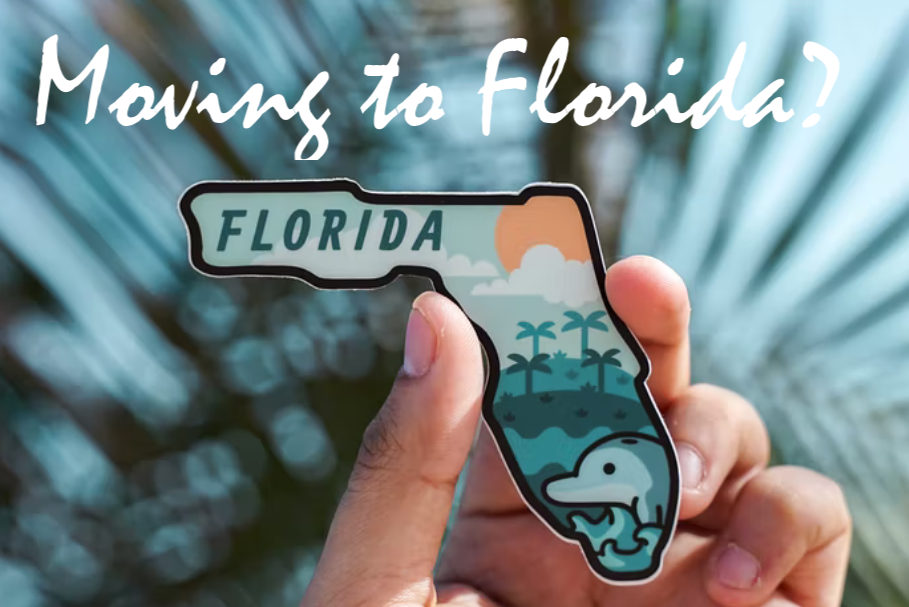A lack of Covid restrictions has made Florida a favorable state in times of trouble. In eco-terms, it’s more energy-efficient to live there over Toronto. Lean more about relocating.
Every week, thousands of individuals move to Florida which is popularly known as “The Sunshine State”. Shifting to any new place comes with its surprises, which is essentially a part of the excitement of moving somewhere new. However, if you haven’t prepared well enough, you might find yourself constantly annoyed at not knowing where is the best place to get Chinese takeout, or what weather you should be expecting. If you are indeed planning to shift to Florida, you are at the right place. This article will be your guide as to what you should know about moving to Florida, in an attempt to help make your transition to your new home much smoother and enjoyable:
What is the weather like in Florida?
Florida’s weather is what pushes individuals to move there – it is after all not called “The Sunshine State” for nothing and the region falls under a sub-tropical climate. This means that Floridians experience longer summers and shorter winters. While the temperatures in the summer can go up to anywhere between 75 and 95 Farhenheit, Floridians barely experience chills in the winter as temperatures stay between 41 and 65 Farhenheit. You’d expect to wear nothing but shorts and tank tops in the summer, whereas you’ll survive the winters with barely a jacket on your back.
Floridians also witness almost 60 inches of rain and precipitation each year. A brief rainstorm every other day is not very uncommon in the state, and hurricanes can occur anytime between June to November, and out of the approximate 290 hurricanes that have hit the United States since 1851, almost 120 of them have left some sort of mark in Florida.
What is the housing scene like in Florida?
Irrespective of whether you are renting or buying a living space in Florida, it is beneficial to cover the basics of the state’s housing conditions. The median home value in Florida is slightly upwards than the national average and stands at approximately US $ 297,400. The average mortgage rates stand at 4.875%, which is slightly higher than the national average. The average rate for personal Florida loans starts at 4.489%. You could expect certain beachfront homes to be more expensive than others and have higher sale prices and mortgage rates.
The state also has the 18th highest rent in the United States out of all states, and the median rent for a two-bedroom apartment stands at approximately US$ 1050, and that for a three-bedroom apartment stands at approximately US$ 1400. The style of apartments and housing in Florida will spoil you for choice – the state has everything from historic homes, to modern condos, and more than often you’d find influences of Spanish and Mediterranean style interiors.
What is the cost of living and insurance in Florida?
In addition to housing, there are several other costs associated with living in Florida which include taxes, transportation, food, utilities, etc. While the estimated costs of a single individual living in Florida could be up to per month $910 USD excluding rent, the cost of a family of four in Florida per month could go up to $3200 USD excluding rent on average.
The good part about living in Florida is that the warmer weather offers considerable cost savings in terms of fuel and winter preparations. Florida also boasts no state income tax, which is a considerable cost saving on multiple terms.
When you consider insurance, most Floridians get home insurance due to the earlier mentioned propensity of rainy weather and hurricanes. Most homes in Florida are on the beach which makes home insurance a necessity. However, flood insurance isn’t a part of most homeowner’s insurance policies in Florida, and individuals are required to purchase flood insurance separately which is provided through both privately held companies and the National Flood Insurance Program.
What is the food and recreational space like in Florida?
The fact that Florida is nestled between the Gulf of Mexico and the Atlantic Ocean gives off considerable hints about the type of cuisine and food you are likely to expect in the state. Since Florida has access to all sorts of seafood, you could expect to find anything from stone crab to lobster and from swordfish to clams on menus throughout the state. You can find the influences of Cajun cooking in northern Florida, and Cuban influences in the southern part of the state. The state also has an abundance of all sorts of fruits and vegetables, and you are likely to always have fresh produce on your visit to the grocery store.
The state has numerous activities all year round – whether you consider the beautiful beaches where one can swim, snorkel, surf or simply lay out in the sun, or you think of the numbers of rivers and lakes that are home to kayaking and paddleboarding activities – there is something for everyone under the sun in Florida. One of the biggest attractions of the state is Walt Disney World which attracts tourists from all over the world.
Conclusion
Moving to any new place can be hectic and tiring – however, if you are armed with the knowledge of the state or region’s living conditions and other pertaining metrics, it is likely to make your move more joyful and enjoyable.

